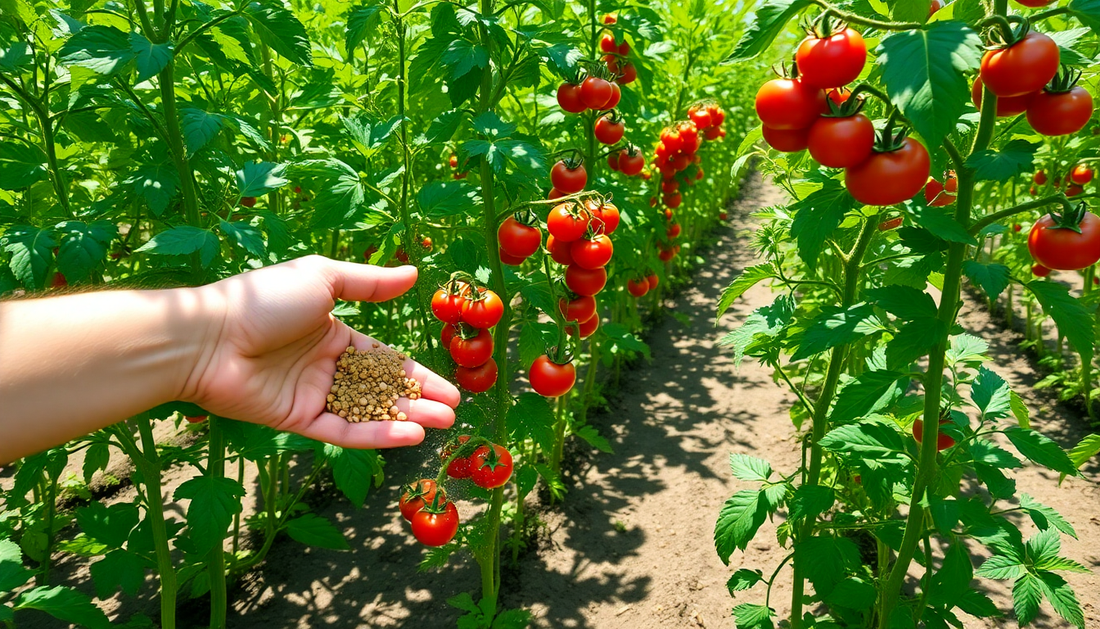
What Fertilizer for Tomato Plants
Understanding the Nutritional Needs of Tomato Plants
When growing tomato plants, understanding their nutritional needs is crucial for healthy growth and bountiful fruit production. Tomatoes are often termed as one of the hungriest plants, needing higher levels of nutrients to thrive compared to other garden crops. These vibrant red fruits, beloved for their juicy texture and flavor, are classified as heavy feeders, meaning they extract a lot from the soil around them. This significant nutrient demand means that soil fertility plays a pivotal role in their cultivation. So, knowing what fertilizer is apt for tomato plants can make all the difference between a forgettable harvest and a mouthwatering one.
Tomato plants primarily thrive on three core nutrients: nitrogen, phosphorus, and potassium. Each of these nutrients contributes uniquely to the growth process. Nitrogen is vital for leafy growth, making the plant's foliage lush and vibrant. Phosphorus is essential for root development and supports the plant’s energy transfer, which is crucial during the fruit set period. Lastly, potassium helps build strong cell walls, improving overall plant health and boosting resistance to diseases.
While these primary nutrients are a top priority, several other trace elements come into play, including calcium, magnesium, and sulfur. These are the unsung heroes that help tomatoes grow strong and healthy, ensuring they ripen well and avoid issues like blossom end rot, a common problem caused by calcium deficiency. Thus, a balanced approach involving both macro and micronutrients is indispensable when considering what fertilizer for tomato plants is needed.
Choosing the Right Fertilizer for Tomato Plants
Choosing the right fertilizer can be daunting with the myriad of options available, ranging from organic to synthetic and compounded with complex nutrient ratios. However, the choice largely depends on your growing environment, the soil’s existing nutrient profile, and personal preferences in gardening methods. Both organic and synthetic fertilizers have their merits, and each can produce outstanding results if used correctly.
Organic fertilizers like compost, well-rotted manure, and bone meal are excellent choices for those who prefer a natural approach. They not only provide essential nutrients but also improve soil structure and encourage beneficial microbial activity. Compost, for instance, is a gardeners' favorite, rich in balanced nutrients and supportive of soil health in the long run. Bone meal, a phosphorous-rich product, is particularly beneficial when planting juveniles, ensuring robust root development.
On the other hand, synthetic fertilizers offer precision and immediate nutrient availability. Formulations such as 10-10-10 (equal parts nitrogen, phosphorus, and potassium) or 5-10-10 (lower nitrogen to reduce overabundant leafy growth) provide clarity in terms of nutrient ratios. These quick-action fertilizers ensure that tomato plants get the nutrients they need promptly, especially important during critical growth phases.
Ultimately, the choice between organic and synthetic comes down to a gardener's preferred methodology and plant growth goals. But regardless of the type, the key is finding a balanced fertilizer that meets the specific needs of tomato plants for improved yields and robust health.
Timing and Application of Fertilizer
The timing and method of fertilizer application can significantly impact the effectiveness of nutrients uptake by tomato plants. While using the right blend is crucial, applying it at the right time in the plant's growth cycle can yield excellent results. Generally, tomatoes benefit from fertilization three times during the growing season: at planting, when the fruit begins to set, and midway through fruiting.
Applying fertilizer at the time of planting provides essential nutrients that kickstart growth and help establish strong root systems. For this initial application, a higher phosphorus content, like that found in bone meal, can promote robust root growth. As tomato plants start to set fruit, a balanced fertilizer, such as a 5-10-10, helps support healthy fruit development while preventing excessive leafy growth that too much nitrogen can cause.
Finally, halfway through the fruiting stage, an additional boost of fertilizer helps sustain the fruit’s nutritional needs, ensuring tomatoes that are plump and flavorful. During this time, using a liquid feed or foliar spray can be particularly effective, providing a quick nutrient uptake, especially for plants that might show nutrient deficiency signs.
Correct application techniques also make a difference. Fertilizers should be spread evenly and incorporated into the soil without disturbing the plant roots significantly. Side-dressing or slow-release granules can also offer consistent nutrient supply over time, ensuring continuous support as the plants move through different growth stages.
Soil Testing: A Vital Step in Fertilization
One often overlooked aspect of fertilization is the importance of soil testing. Before applying any type of fertilizer, it can be highly beneficial to conduct a simple soil test to determine existing nutrient levels and pH status. Soil testing provides a snapshot of your soil’s current condition and helps identify nutrient deficiencies or surpluses. This knowledge allows for more tailored and effective fertilization strategies, avoiding over-application that can lead to nutrient run-off and environmental pollution.
Most agricultural extension offices or private soil labs offer testing services, providing details on macronutrients, pH, organic matter content, and sometimes even micronutrients. For tomato plants, it’s recommended that soil pH be maintained between 6.0 and 6.8 for optimal nutrient uptake.
Understanding your soil’s baseline fertility will enable you to adjust your homemade or commercial fertilizers accordingly, ensuring your tomato plants get what they need without unnecessary additions. This step not only supports plant health but also conserves resources, as you’ll be able to optimize the application of nutrients, particularly in environments where sustainability is a priority.
By taking the guesswork out of fertilization, soil testing empowers gardeners to make educated decisions, leading to healthier plants and a more abundant harvest.
Common Fertilization Mistakes to Avoid
Despite all the information available, mistakes in fertilizing tomato plants are quite common but fortunately avoidable with the right knowledge. One such mistake is over-fertilizing, which can result in lush foliage but little fruit, as an excess of nitrogen encourages leaf growth over fruiting. It’s crucial to adhere to recommended application rates on fertilizer packages and adjust according to soil testing results.
Another frequent pitfall is improper timing of fertilizer applications. Understanding the growth stages of tomato plants is vital as incorrect timing can render your efforts ineffective. For instance, fertilizing too late in the season can lead to green tomatoes that fail to ripen properly.
Inconsistent fertilization practices also hinder plant productivity. Tomato plants thrive with a steady supply of nutrients; thus, neglecting regular feeding schedules can lead to nutrient stresses. This stress can manifest as various deficiencies, which might be misdiagnosed as plant diseases, complicating treatment.
Lastly, ignoring soil health is a mistake. Fertilizers are more effective in nutrient-rich, well-structured soil. Thus, focusing on building your soil’s organic matter through compost or cover crops will provide a healthier base for fertilization to work its magic.
By steering clear of these common mistakes and maintaining a well-rounded fertilization and soil management plan, your tomato plants are sure to flourish with vibrant growth and robust, delicious fruits.
